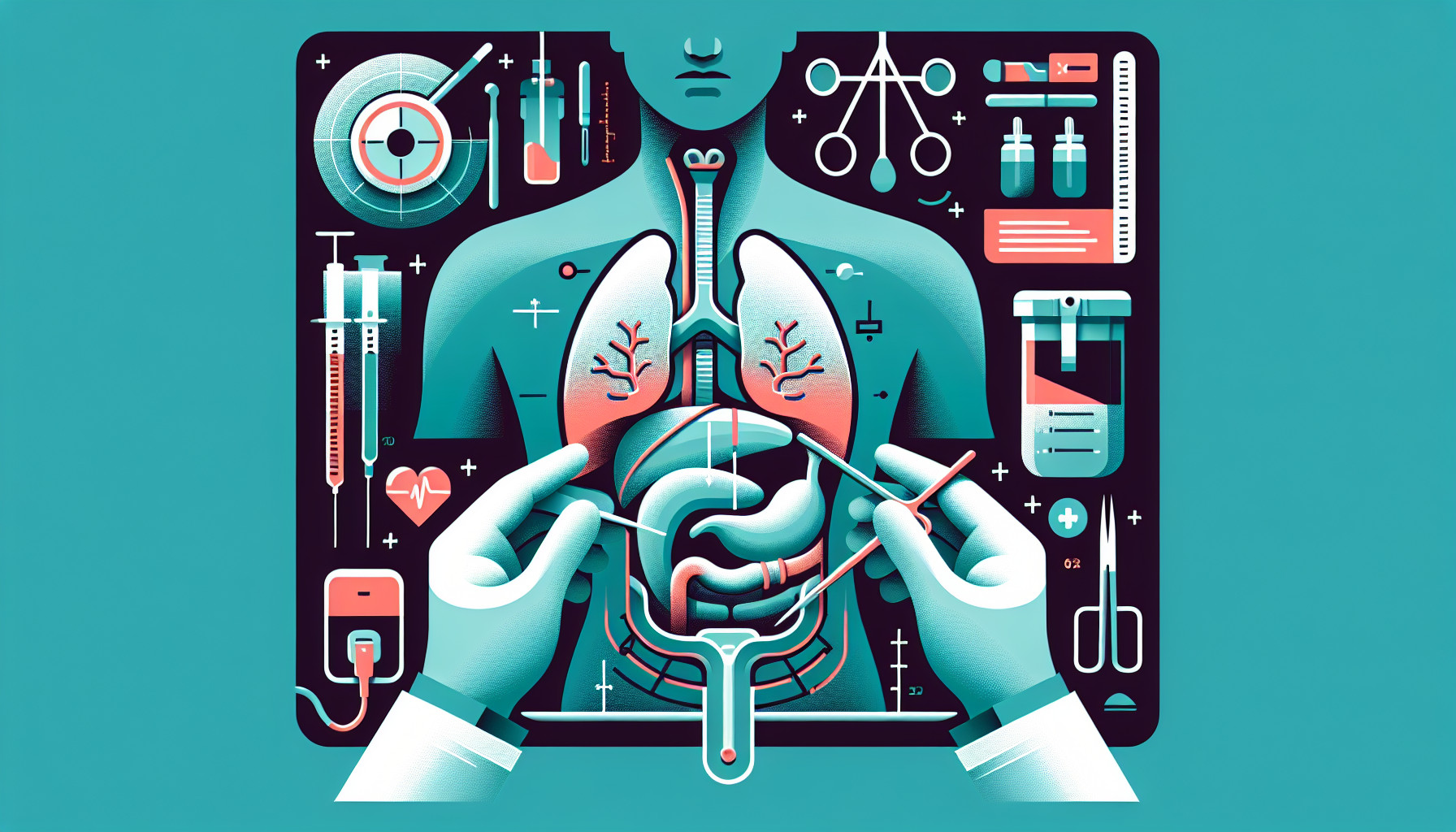Our Summary
This research paper discusses a rare complication that can occur after a combined pancreas-kidney transplant, where a connection (fistula) forms between the colon, small intestine, and bladder. Detecting this complication can be difficult due to the effects of immunosuppression, which can cause unusual symptoms.
The study presents the first recorded case of this happening in a patient nine years after their transplant. The patient was experiencing repeated urinary tract infections and increased creatinine levels (a sign of kidney problems). The presence of a fistula was suspected when a tube was used to examine the bladder (a cystoscopy), but despite extensive investigation, the fistula could not be located.
The patient ended up having surgery due to the ongoing urinary complaints, positive cystoscopy results, and the presence of multiple pouches in the colon wall (diverticula) seen on a CT scan. During the operation, the fistula was finally found between the sigmoid colon (lower part of the colon) and the duodenal stump of the pancreas transplant. The patient underwent further surgery to remove the affected part of the colon, repair the bladder, and adjust the pancreas transplant.
The researchers conclude that in organ transplant recipients who present with recurrent urinary infections and elevated creatinine levels, complications of diverticulitis (inflammation of the pouches in the colon wall) should be considered. Even if the fistula can’t be clearly defined, surgical exploration may be necessary.
FAQs
- What is the mortality rate of complicated diverticulitis after transplantation?
- What complications might organ transplant recipients experience if they have diverticulitis?
- What treatment was performed for the patient with a coloduodenovesical fistula after a simultaneous pancreas-kidney transplant?
Doctor’s Tip
A helpful tip a doctor might tell a patient about pancreas transplant is to be aware of the potential complications, such as diverticulitis, and to seek medical attention if experiencing symptoms such as recurrent urinary tract infections or elevated creatinine levels. It is important to communicate any changes in health to your healthcare provider to ensure timely diagnosis and treatment of any potential issues.
Suitable For
Patients who are typically recommended for pancreas transplant are those with type 1 diabetes mellitus who have difficulty controlling their blood sugar levels with insulin therapy and who are experiencing complications of diabetes such as kidney disease, nerve damage, or eye damage. Additionally, patients who have end-stage kidney disease and require a kidney transplant may also be considered for a simultaneous pancreas-kidney transplant. It is important for patients to undergo a thorough evaluation by a transplant team to determine their eligibility for a pancreas transplant.
Timeline
Before pancreas transplant: The patient likely has been diagnosed with type 1 diabetes and has been experiencing complications related to the disease, such as kidney failure. The patient undergoes evaluation for a pancreas transplant, including medical tests and psychological assessments. The patient is placed on the transplant waiting list and waits for a suitable donor organ to become available.
Day of pancreas transplant: The patient undergoes surgery to receive a pancreas transplant, either alone or in combination with a kidney transplant. The surgery can last several hours, and the patient is closely monitored in the intensive care unit immediately following the procedure.
First few weeks after transplant: The patient is monitored closely for signs of rejection or complications, and may need to stay in the hospital for a period of time. Immunosuppressive medications are started to prevent rejection of the transplanted organ.
Months to years after transplant: The patient continues to take immunosuppressive medications and undergo regular check-ups to monitor the function of the transplanted pancreas. The patient may experience episodes of rejection or other complications, which require medical intervention.
9 years after transplant: The patient presents with intermittent episodes of elevated creatinine and recurrent urinary tract infections, indicating a possible complication related to the pancreas transplant. Despite extensive investigation, a fistula tract between the colon and duodenal stump of the pancreas allograft is identified. Surgical exploration and repair are performed to address the complication.
Overall, the patient undergoes a complex journey before and after a pancreas transplant, facing potential complications and challenges along the way. Regular monitoring and medical intervention are crucial in ensuring the long-term success of the transplant.
What to Ask Your Doctor
What are the risks and benefits of a pancreas transplant in my specific case?
How long is the recovery period after a pancreas transplant?
What medications will I need to take after the transplant, and what are the potential side effects?
How will the transplant affect my diabetes management?
What are the signs and symptoms of complications after a pancreas transplant, and when should I seek medical attention?
How often will I need to follow up with my transplant team after the procedure?
Are there any lifestyle changes I should make after a pancreas transplant?
What is the success rate of pancreas transplants at this facility?
How will the pancreas transplant impact my overall health and quality of life?
Are there any alternative treatment options I should consider before proceeding with a pancreas transplant?
Reference
Authors: Rahnemai-Azar AA, Penna M, Morrison SD, Rayhill SC, Sibulesky L, Muczynski KA, Bakthavatsalam R. Journal: Transplant Proc. 2017 Oct;49(8):1960-1962. doi: 10.1016/j.transproceed.2017.04.009. PMID: 28923655
